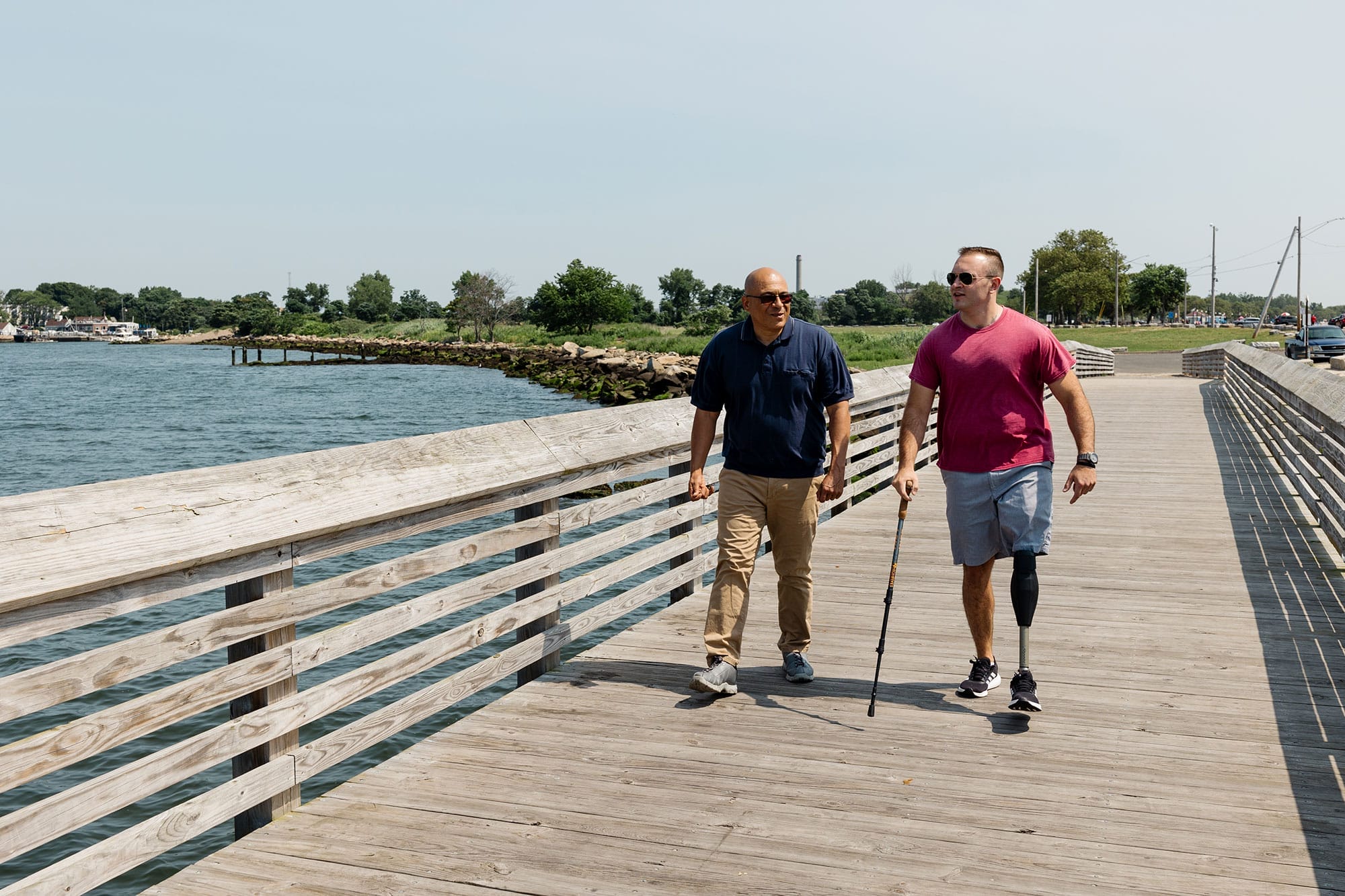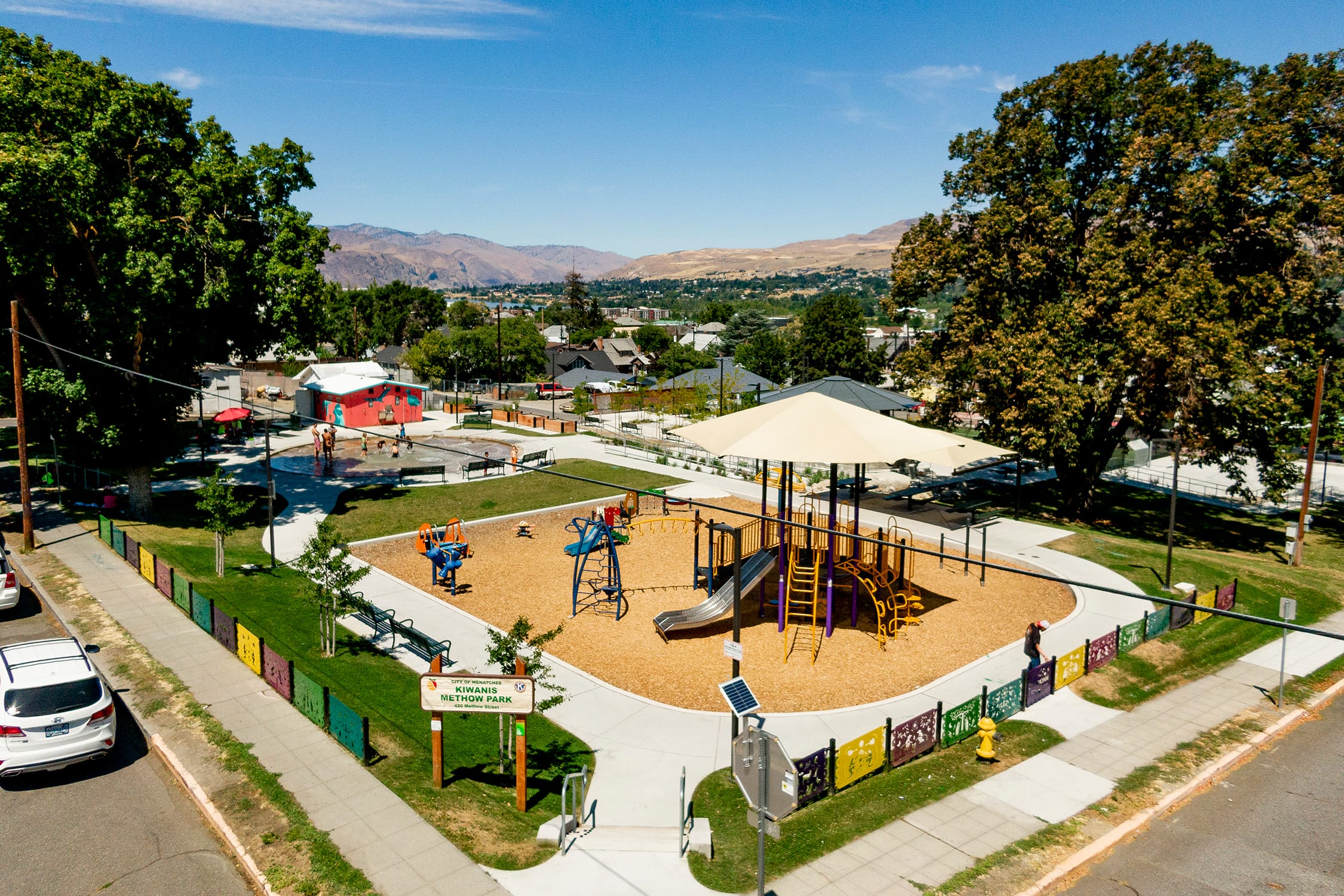
Where some see a wasteland, desert people see a place worth protecting
Where some see a wasteland, desert people see a place worth protecting
What do you see when you look at a desert? An empty space? A forbidding wasteland? For some, the sun is too bright, the air too dry, and the cactus too thorny. Others might find the desert a nice place to visit, but no place to live.
But for some people—desert people—the space and the solitude found where the soil turns to sand is an invitation to create and explore. In the high Mojave Desert east of Los Angeles, the unincorporated community of Joshua Tree is home to offbeat artists, rock climbers, and a military community: people who’ve found something in the desert worth staying for.
As the Mojave faces increasing threats from energy development, climate change, and sprawl, this eclectic community has come together to protect the desert they love. Since 2014, we have worked with the Mojave Desert Land Trust to conserve 2,500 acres around Joshua Tree National Park—including a property once slated for a huge subdivision, a new backcountry access point, and a site under consideration for an ADA-accessible campground.
 We helped conserve four big parcels near Joshua Tree National Park, including one that may become a new campground for families.Photo credit: Flickr user Guisepe Milo
We helped conserve four big parcels near Joshua Tree National Park, including one that may become a new campground for families.Photo credit: Flickr user Guisepe Milo
No one knows the value of these desert landscapes like the people who live there. We asked Joshua Tree residents why it’s so important to protect places like the Mojave—what it is that desert people see in the desert.
Kim Stringfellow
Artist behind The Mojave Project
I think everyone has a space that they feel comfortable in. I grew up in Western Washington, which is totally lush and green, but I’ve felt most comfortable in the desert. People equate the desert with a wasteland: these are deep philosophies that humans, or at least a lot of Americans, share. People from verdant green landscapes back east see the desert and go, “Sure, let’s dig a mine, let’s build a subdivision, because there’s nothing there.”
Americans learned to appreciate the desert as a landscape, historically, last of all—way after we’d created parks to save mountains, forests, beaches, and historical sites. People expect to be bowled over. There’s majesty and wonder here, but not like a giant sequoia. The wondrousness of the desert is hidden, or small, or hard to comprehend at first glance.
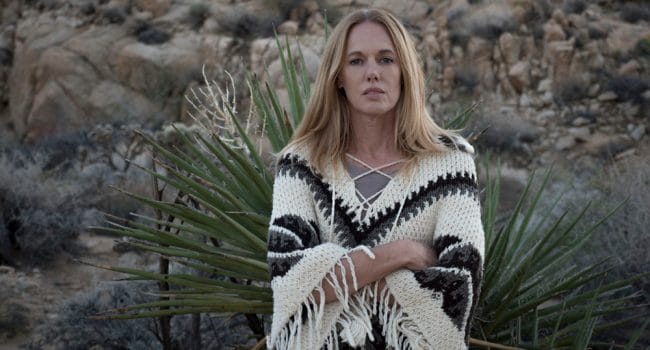 Stringfellow works to generate appreciation of the desert for its own sake. “The historical mindset approaching the Mojave has been to value only what can be taken from it, which way of thinking has gotten us into a dangerous place as a species.”Photo credit: Kim Stringfellow
Stringfellow works to generate appreciation of the desert for its own sake. “The historical mindset approaching the Mojave has been to value only what can be taken from it, which way of thinking has gotten us into a dangerous place as a species.”Photo credit: Kim Stringfellow
Seth Zaharias
Rock climber and co-owner of Cliffhanger Guides
Joshua Tree is one of the best places on the planet to be a climber. The climate is good all winter and the rock is basically endless. There are over 9,000 routes in the national park alone: you’re not even considered a “local” here until you’ve done a thousand different climbs. But as the sport of climbing grows, our impact on the desert is growing, too—you see more unauthorized trails to the rocks. So I’m in favor of anything that can help take the pressure off and open more areas for the public outside of the park boundary.
I’m 42 now. I was in my early 20s when I landed in Joshua Tree. I stumbled into owning an old homestead north of town, way out in the open. The openness of the desert invites people to think outside of the box. It sounds cheesy, but it’s true—whether it’s art, music, or climbing, openness and opportunity are a big part of the culture and the tight-knit community here, and I think that all comes right back to the desert.
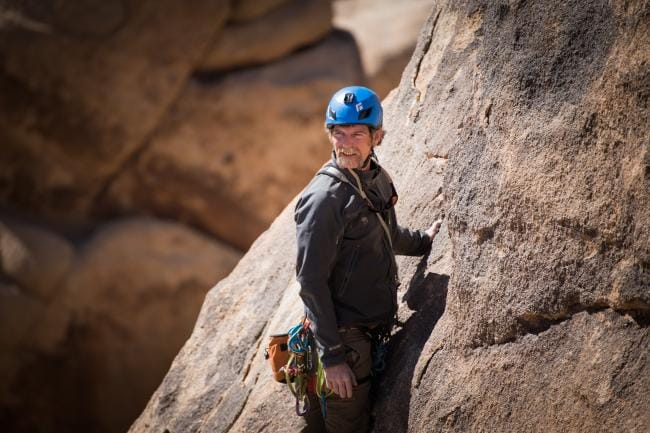 Seth Zaharias runs a rock climbing company in Joshua Tree.”The desert is opportunity and openness. It invites people to ask, ‘What can I do here?’ I can do anything I want!”Photo credit: Seth Zaharias
Seth Zaharias runs a rock climbing company in Joshua Tree.”The desert is opportunity and openness. It invites people to ask, ‘What can I do here?’ I can do anything I want!”Photo credit: Seth Zaharias
Madena Asbell
Desert plant expert and creator of the Mojave Desert Land Trust’s seed bank
The Mojave is incredibly diverse: 30 percent of the plant species found in California grow in the Mojave, and a lot of them occur nowhere else on earth. Plants here tend to grow slowly and not get very large, but they can live a long time. Some unremarkable-looking bunch grass by the side of the road can be a hundred years old. So when the desert is harmed—through fire or development or whatever—when the land is stripped or scarred, it takes a very long time for those scars to heal.
Wildfire is becoming more common and more devastating in the Mojave because of climate change and invasive plant species that now carpet vast areas of the desert. So our volunteers collect seeds from native plants, then clean and store them: in case of wildfire or another environmental disturbance, the seed bank is a resource to help restore habitat. It’s like our insurance policy—you hope you never have to use it. From a plant perspective, we want to think about conserving intact habitat first, because that’s where each plant—and wildlife like the desert tortoise, bighorn sheep, bobcat, and coyote has its best chance of survival.
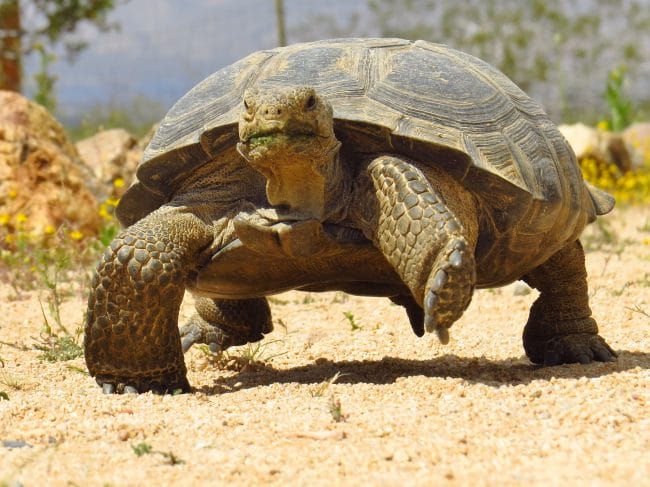 Asbell says the seed bank she oversees is an “insurance policy” against habitat destruction. In the event of fire or other disturbance, the seed bank will help restore the ecosystem for animals like the desert tortoise.Photo credit: Flickr user Gary Skipper
Asbell says the seed bank she oversees is an “insurance policy” against habitat destruction. In the event of fire or other disturbance, the seed bank will help restore the ecosystem for animals like the desert tortoise.Photo credit: Flickr user Gary Skipper
Barnett English
Founder of the twice-yearly Joshua Tree Music Festival
I came to a didgeridoo festival in Joshua Tree in 2002 and I loved the place and the people immediately. Desert people have open minds, open hearts, and a lack of judgement. And the surroundings are magical. So I went for it: now the Joshua Tree Music Festival brings together up-and-coming acts for four days each spring and fall, and we’re getting ready to convene our 28th festival.
The Mojave is a great place for an event like ours, but the desert breeds expression and creativity all year long. The wide-open desert skies are inspiring. It’s like having a clutter-free desk—a short stroll in the desert will generate more creative ideas than a month in the city.
Are you a desert person, or do you know one? Head over to Facebook and tell us what you love about the desert.
This raw, beautiful landscape in Southern California is home to Indigenous heritage sites, and it provides critical habitat for threatened and endangered species. Urge President Biden to safeguard this extraordinary landscape today!


Donate to become a member, and you’ll receive a subscription to Land&People magazine, our biannual publication featuring exclusive, inspiring stories about our work connecting everyone to the outdoors.
See how our supporters are helping us connect people to the outdoors across the country.








